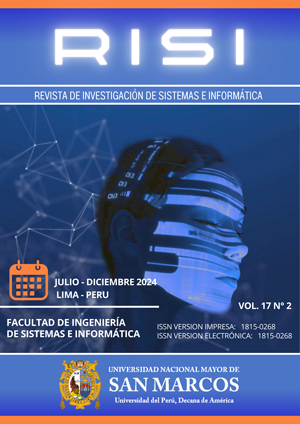Artificial Intelligence-Assisted Ethnographic Analysis to Identify Patterns and Trends in the Quality of Life of Native Communities in Cadastral Surveys
DOI:
https://doi.org/10.15381/risi.v17i2.29344Keywords:
Artificial Intelligence, Ethnographic, Cadastre, Quality of Life, Computer VisionAbstract
The objective of this article is to determine the cadastre and the quality of life of the native community of Manacamiri through an ethnographic study supported by artificial intelligence. The research is non-applied and mixed, with a descriptive approach. The design of the study is non-experimental, and we worked with a sample of 33 randomly selected native settlers, complemented with information obtained from images of the territory captured by a drone. The results cover economic, social and health aspects, as well as the identification of characteristics and anomalies in the images, diagnosed by means of artificial intelligence models to define the living conditions of the native community of Manacamiri.
Downloads
Downloads
Published
Issue
Section
License
Copyright (c) 2024 Ciro Rodriguez Rodriguez, Norberto Ulises Roman Concha, Pedro Martin Lezama Gonzales, Ivan Carlo Petrlik Azabache, Carlos Edmundo Navarro Depaz, Carlos Ernesto Chavez Herrera

This work is licensed under a Creative Commons Attribution 4.0 International License.
AUTHORS RETAIN THEIR RIGHTS:
a. Authors retain their trade mark rights and patent, and also on any process or procedure described in the article.
b. Authors retain their right to share, copy, distribute, perform and publicly communicate their article (eg, to place their article in an institutional repository or publish it in a book), with an acknowledgment of its initial publication in the Revista de investigación de Sistemas e Informática.
c. Authors retain theirs right to make a subsequent publication of their work, to use the article or any part thereof (eg a compilation of his papers, lecture notes, thesis, or a book), always indicating its initial publication in the Revista de investigación de Sistemas e Informática (the originator of the work, journal, volume, number and date).


